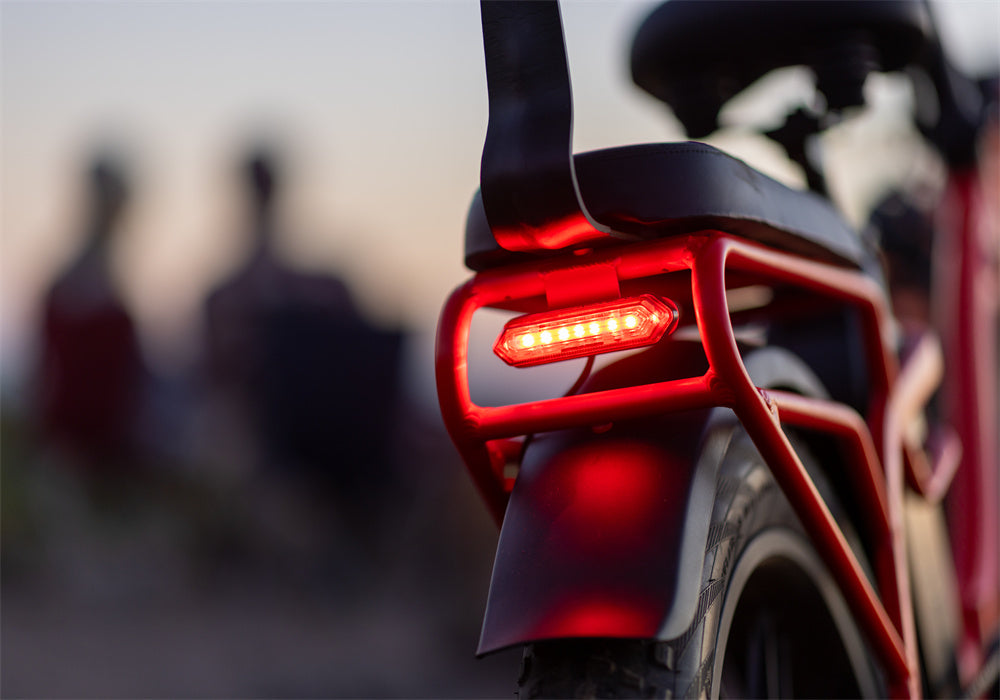Electric bikes have surged in popularity as a sustainable and convenient mode of transportation. However, as their use becomes more widespread, the issue of battery safety, including the risk of battery fires, has become a significant concern. Proper charging practices are crucial to ensure both the performance and safety of your ebike. The battery used by Tesway electric bike is safe battery for users after multiple verification tests. In this comprehensive guide, we cover all aspects of charging your ebike to ensure optimal performance and longevity.
Charging Time for an Electric Bike
The time it takes to charge an electric bike depends on several factors, including the battery capacity, the charger’s output, and the current battery level. Most ebike batteries have capacities ranging from 300Wh to 700Wh, and chargers typically offer outputs between 2A and 4A.
A higher capacity battery takes longer to charge. A 500Wh battery paired with a 2A charger will take around 6-7 hours to fully charge from empty. Conversely, using a 4A charger can cut this time in half, charging the same battery in about 3-4 hours. It’s crucial to use a charger compatible with your battery to prevent damage and ensure safety.
To optimize charging time, charge your battery in a cool, dry place to prevent overheating. Avoid letting the battery drop to 0% before recharging. Use the charger that comes with your ebike or one recommended by the manufacturer. Regularly charging your battery and avoiding deep discharges can also prolong its lifespan.
SEE ALSO : Never Run Out of Juice: Top Spots to Charge Your Ebike on the Go
Cost to Fully Charge an Ebike
The cost of charging an ebike is relatively low compared to the overall benefits it provides. To calculate the cost, you need to know your battery capacity (in kWh) and the cost of electricity in your area.
Assuming an average electricity rate of $0.13 per kWh: Determine Battery Capacity in kWh by converting watt-hours (Wh) to kilowatt-hours (kWh) by dividing by 1000. A 500Wh battery is 0.5kWh. Multiply by Electricity Rate: 0.5kWh x $0.13 = $0.065.
Therefore, fully charging a 500Wh battery costs about 6.5 cents. Even larger batteries, like 700Wh, would cost under 10 cents to charge fully. These costs can vary based on your local electricity rates, but they remain negligible compared to the savings on fuel and maintenance for other vehicles.

Do Electric Bikes Charge When You Pedal
Some electric bikes come equipped with regenerative braking or pedal-assist systems that can recharge the battery while riding. However, the energy recovered through these methods is minimal.
Regenerative braking captures some of the kinetic energy produced when slowing down and converts it back into electrical energy stored in the battery. While this technology is more common in electric cars, some high-end ebikes also feature it.
Pedal-assist systems can provide slight recharging benefits, but they are primarily designed to extend the range rather than fully recharge the battery. The amount of energy recovered through pedaling is usually insufficient to make a significant difference in battery life. Therefore, relying solely on pedaling to charge your ebike is not practical.

Charging Your Ebike After Every Ride
It’s generally a good practice to charge your ebike after every ride, especially if you’ve used a significant portion of the battery. Keeping the battery topped up can help maintain its health and longevity.
Modern lithium-ion batteries used in ebikes perform best with partial discharges and recharges. Avoid letting the battery drop below 20% frequently. If you plan to store your ebike for an extended period, charge the battery to about 60-80% and store it in a cool, dry place. This helps prevent degradation. Most modern chargers have automatic shutoff features to prevent overcharging. Still, it’s advisable to unplug the charger once the battery is fully charged.
Regularly charging your battery ensures that it’s always ready for your next ride and helps extend its overall lifespan.

Safety of Using a Higher Amp Charger
"My Ebike Has a 48V 12Ah Lead-Acid Battery but the Charger I Have Is 48V 20Ah. Will This Work to Charge My Ebike?" Using a charger with a higher amp rating than your battery is designed for can be problematic. The 48V specification means the voltage is compatible, but the amperage (Ah) difference needs careful consideration.
A 48V 20Ah charger is designed to deliver more current than a 48V 12Ah battery might safely handle. This can cause overheating and potential damage. Always follow the manufacturer’s guidelines for charging. Using a charger with an appropriate amp rating for your battery ensures safety and efficiency. High amp chargers might not have the necessary control mechanisms to safely charge a smaller capacity battery.
To avoid risks, use a charger with an amp rating that matches your battery’s specifications. If in doubt, consult your ebike’s manufacturer for guidance on the best charging practices.

Can You Charge an Ebike from Another Ebike Battery
Charging an ebike from another ebike battery is not recommended. Batteries are designed to be charged using a dedicated charger that controls the voltage and current to ensure safe and efficient charging.
Batteries have specific voltage requirements, and mismatching voltages can damage the battery or the bike’s electronics. Dedicated chargers regulate the current to prevent overheating and ensure a stable charge. Using an incompatible power source can lead to overheating, reduced battery life, and even safety hazards like fires.

Charge Ebike Battery Safety Tips for You
Charging your ebike battery safely is essential to prevent accidents and extend the battery’s lifespan. Start by using the charger that came with your ebike or one recommended by the manufacturer, as this ensures compatibility and prevents damage. Always charge your battery in a cool, dry place to avoid overheating, and never let the battery drop to 0% before recharging. It’s best to avoid deep discharges and aim for partial recharges, keeping the battery level between 20% and 80%.
Unplug the charger once the battery is fully charged, even if the charger has an automatic shutoff feature, to prevent any risk of overcharging. Regular maintenance, including checking for any signs of wear or damage to the battery and charger, can also help maintain safety. If you’re storing your ebike for an extended period, charge the battery to about 60-80% and store it in a cool, dry place to prevent degradation.
Conclusion
The rise in the popularity of electric bicycles is undeniable, and it's easy to see why. Not only are ebikes more economical compared to cars and ride-sharing services like Uber, but they also offer a sustainable mode of transportation. However, with this growing trend comes the critical need for proper battery care. Every rider must understand the correct charging practices to ensure longevity and optimal performance of their ebike.
FAQs
Can I use a regular outlet to charge my e-bike?
Yes, most e-bikes can be charged using a standard household outlet. However, always check your e-bike's manual for specific instructions and voltage requirements.
Can I charge my e-bike in the rain?
Charging your e-bike in wet conditions is not recommended. Always charge your e-bike in a dry, indoor environment to avoid any risk of electrical shock or damage to the battery.
What should I do if my e-bike battery gets very hot during charging?
If your e-bike battery becomes excessively hot during charging, unplug it immediately and let it cool down. Consult the manufacturer or a professional if the issue persists, as this could indicate a problem with the battery or charger.







Share:
Safely Charge Your Electric Bike | Why Overnight Charging Isn't Safe
Pedal Assist Electric Bike Explained